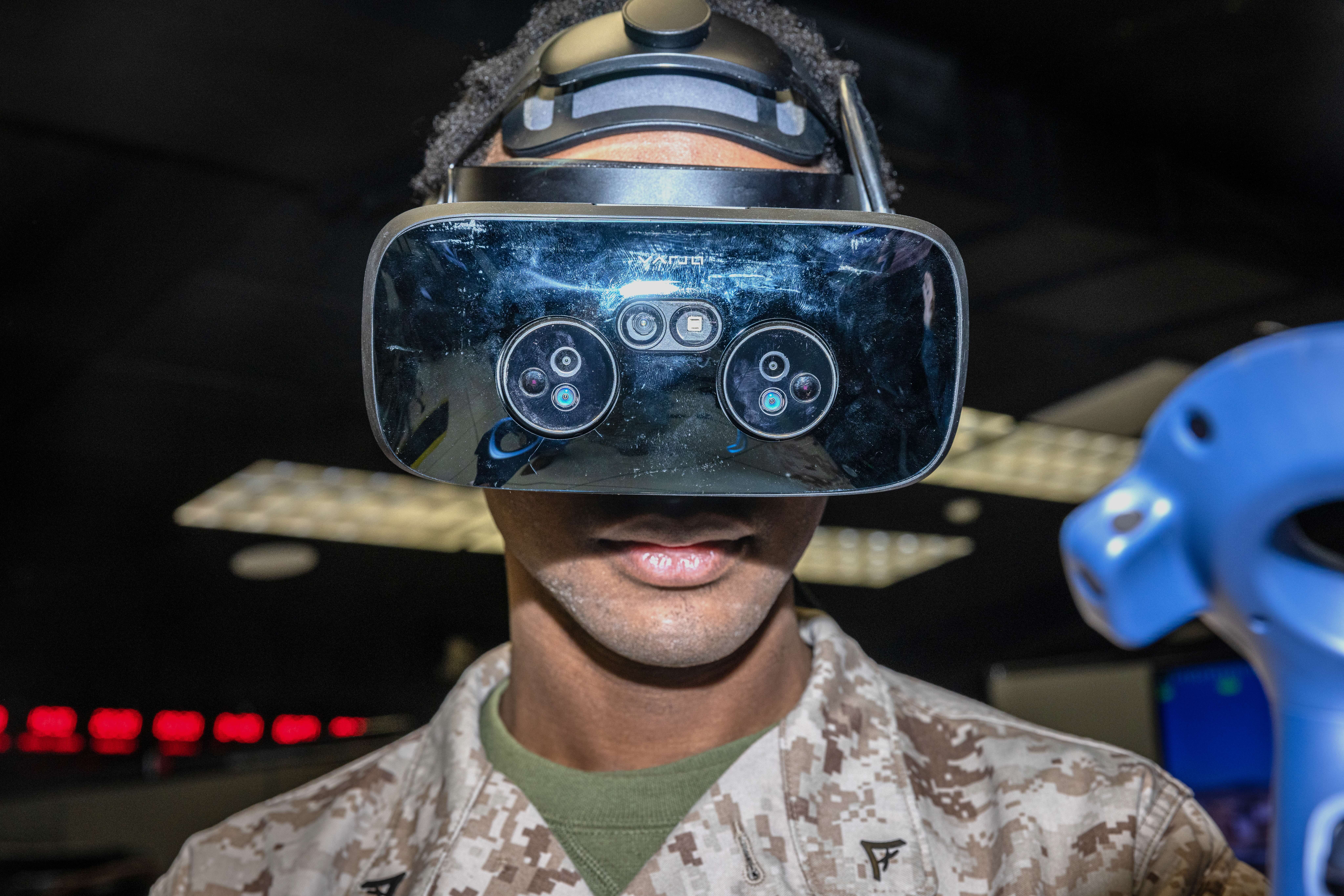
SAN DIEGO – This month, 6,700 Marines and sailors will test a new system that brings the technology high fidelity of networked flight simulators down to the dust and sand of infantry combat training.
As part of the Service-Level Training Exercise 2-24 at the Marine Corps Air-Ground Combat Center in Twentynine Palms, Calif., some 2,400 Marines and over 200 tactical vehicles and 60 buildings at MCAGCC’s ranges are wired with sensors and trackers that provide unit commanders a live, as-it-happens view of simulated battle against an adversarial force, Training and Education Command (TECOM) officials told USNI News.
The Marine air-ground task force warfighting exercise, or MWX, is an operational evaluation for the new force-on-force training technology the service is fielding this year to add combat realism for infantry platoons and other ground forces. MWX will also serve as a mobile, secure, all-domain network that supports realistic training wherever Marines are operating.
Called the Marine Corps Tactical Instrumentation System, or MCTIS, will replace the Marines’ existing force-on-force capability on its decades-old Instrumented Tactical Engagement Simulation Systems II platform, or I-TESS.
When equipped with its sensors and detectors, a Marine and their weapons can engage another fighting as the opposing force and “get real-time kill removal to ensure that the right lessons are learned,” Lt. Gen. Kevin Iiams, who leads the Quantico, Va.-based TECOM, told USNI News.
“Marines want to fight. They want to train and they want to fight,” Iiams said in an interview. “If our training system is not helping them do that better and faster, then they’re going to set it aside. So we are very much aware that what we’re going to strap on a Marine as part of their force-on-force training system has to be light, lean, lethal. It has to be accurate. We have to give them a debriefing system… and after-action tool, so commanders are going to be able to sit down and look and see – in real time – what their forces are doing.”
MCTIS ties in Force-on-Force Training Systems-Next’s shooting simulators, sensors and a command-and-control network along with low-velocity training Special Effects Small Arms Marking System (SEAMS) rounds for the close-quarters fight, according to TECOM. The system is designed to let Marines use their own weapons to fire training rounds that leave a mark on targets as opposed to the existing training system which is a more sophisticated version of laser tag.
The MEFs are fielding force-on-force battalion training kits through this summer, with the Fleet Marine Force mostly fielded by 2025, Iiams said.
TECOM is fielding three versions of the system’s sensor and detector kits to equip individual shooters, unit weapons systems or surrogates and vehicles through contracts issued to Saab, Inc. The force-on-force training kits include individual vests with embedded sensors and detectors and components for vehicles and weapons, including mortar systems and indirect fires. It equips smaller vehicles like Humvees and joint light tactical vehicles, but future iterations for larger vehicles will include light armored vehicles and assault combat vehicles. An integrated, next-generation debriefing tool allows for immediate after-action briefing and reviews for exercise evaluators and Marines.
Tracking sensors and shooters
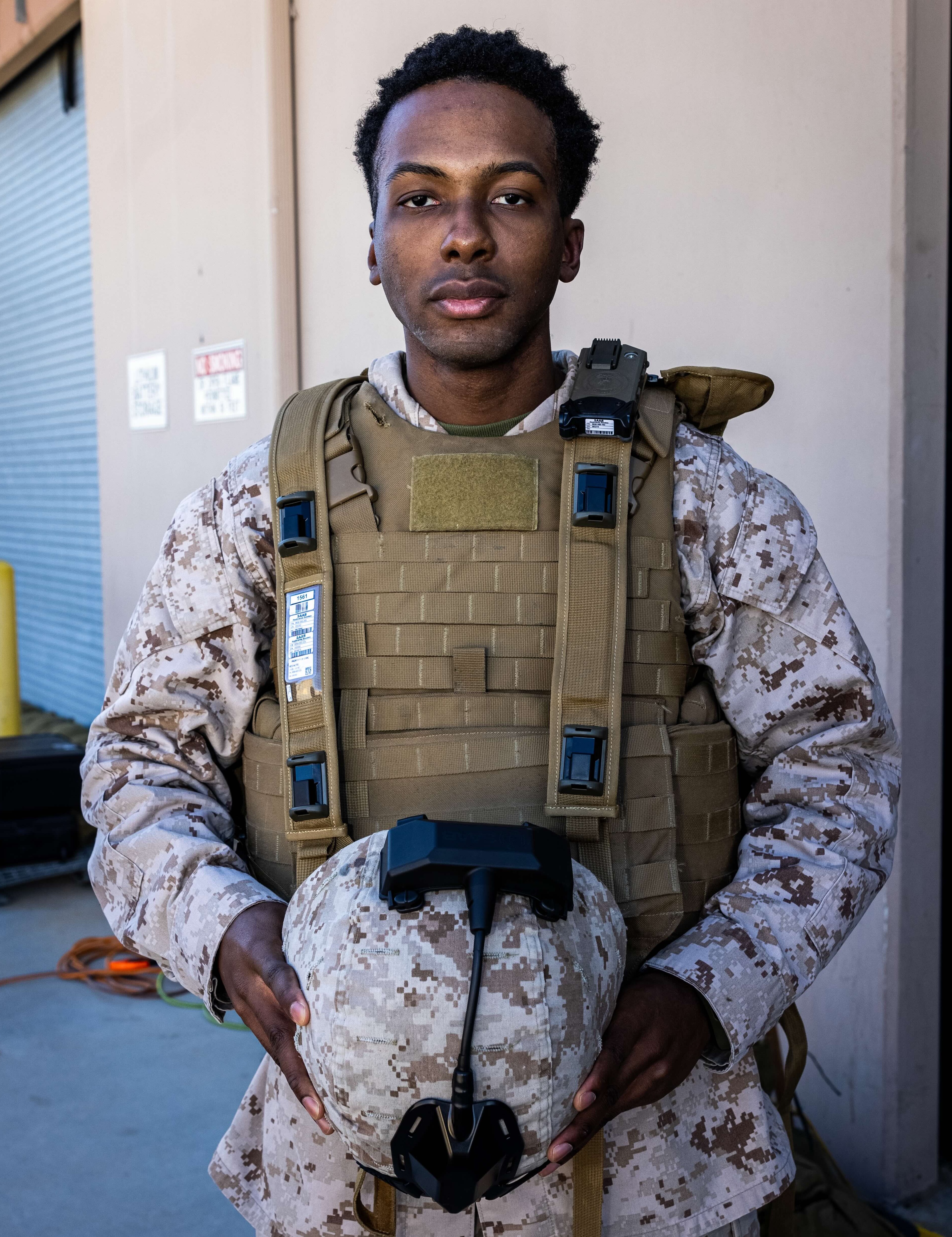
With improved detection, including of rounds against targets, MCTIS provides instant feedback to shooters, commanders and exercise controllers via secured mobile networks.
“You can track the vehicles and the individuals in that vehicle,” said Col. Dane Salm, TECOM’s director of range and training programs division.
Consider a scenario of a truck carrying Marines that rolls over a buried explosive device that then detonates. “The simulation will show of those Marines what injuries they received, based on what kind of IED it was (and) what kind of vehicle went over it,” Salm said. “It will tell them or it’ll show them, you just died or what your wound is, and they can be adjudicated and they roll back to the rear. And in the scenario, it’ll show them as four dead or four wounded.”
“That kind of stuff we haven’t been able to do,” he noted. “They would have been held off to the side and talked to, Ok, you two are dead, now reset and get back into the fight.”
With the new system, he said, those are counted as casualties “and it shows them, in real time, how many people they’re are actually attriting (and) actually killing the enemy.”
The next-gen system provides “can actually adjudicate whether you got hit in the arm or center mass,” said Col. Marcus Reynolds, Marine Corps Systems Command’s program manager for training systems.
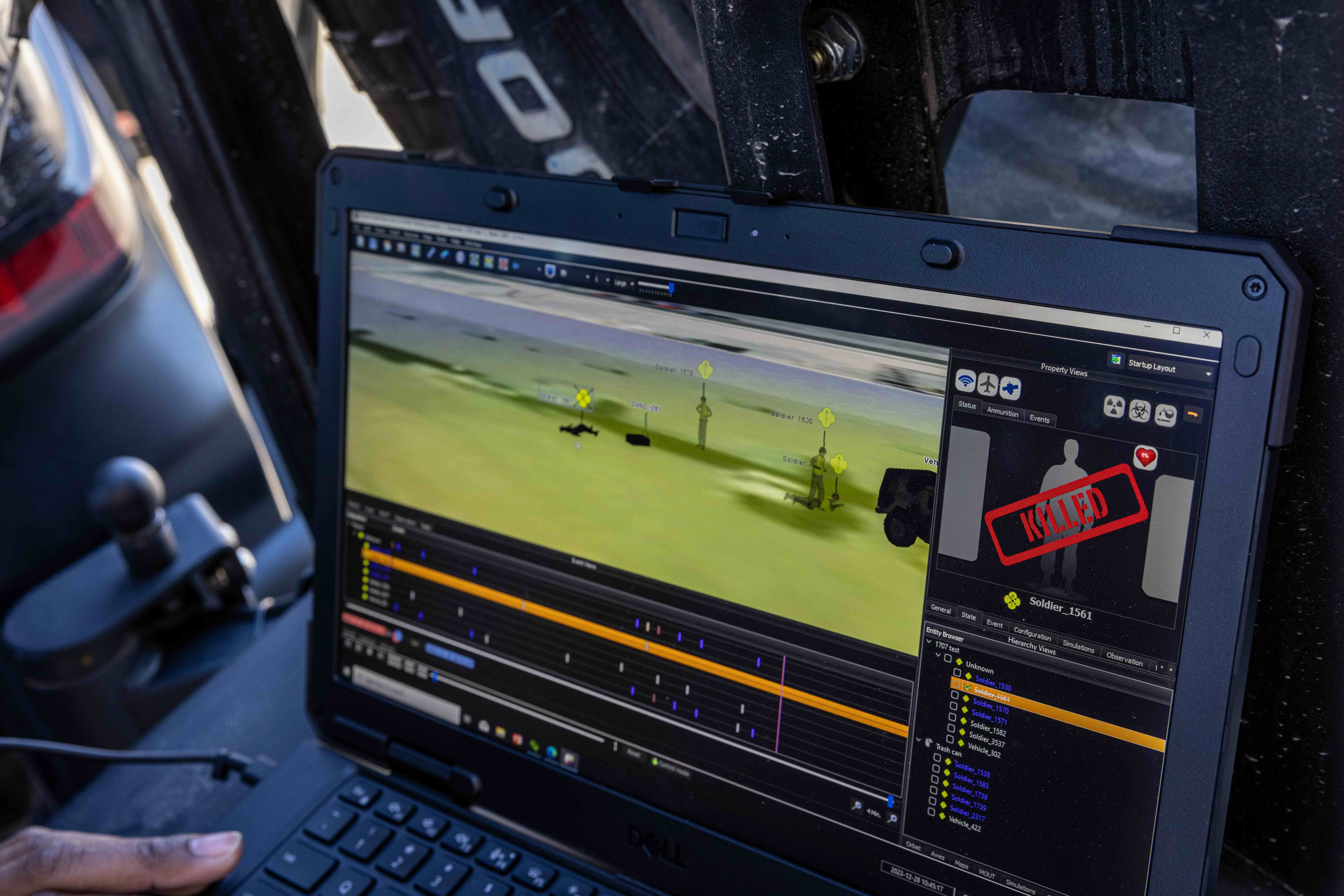
The Marine hit will feel it via tactile feedback, and the system feeds and records, in real time, information into the COP about the troops’ location. “So you can fast-forward, rewind it,” Reynolds said. “It takes us to the next level to help the Marines get better.”
The instrumented system provides more-accurate tallies of the effectiveness of friendly and adversarial forces. For example, a building shot at with a small-caliber weapon won’t have much effect on anyone inside.
“However, if it’s a larger caliber .50-cal and it hits that building, based on what it’s made of it’ll have the direct effects” on it, Reynolds said. “We’ll have sensors inside which will give feedback to those Marines that are inside the facility. If they’re down and out of sight, hey, maybe they’re good. But if they’re standing up there just hanging out, guess what? They will be shown as casualties in the system.”
Marines using the system “actually get real effects as if they were in combat, versus before, Oh I see a Marine that’s a mile out and I’ll just pull my trigger,” Reynolds said.
Using MCTIS on a sensor-driven, networked battlespace will let exercise controllers track every movement and action of those Marines on the ground and in the virtual environment. Exercise controllers “can actually view the force-on-force in real time and see them moving on the battlefield,” said Salm.
Refining force-on-force
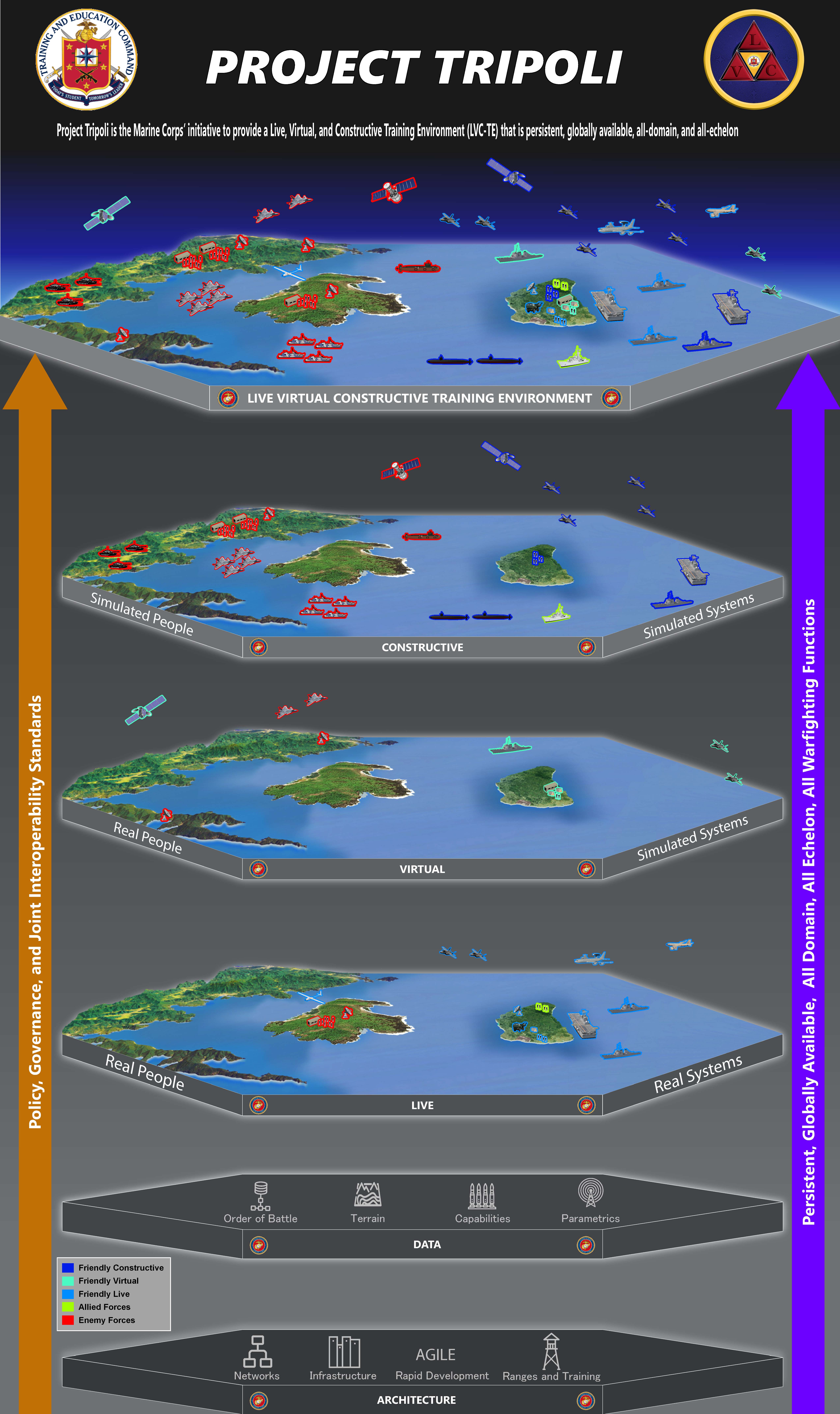
SLTE 2-24 marks the latest implementation of Project Tripoli, the Marine Corps’ efforts to modernize and standardize training programs in live, virtual and constructive environments to prepare Marines for future combat operations in line with the overarching Force Design concepts. The LVC environment is a shared, digital battlespace that combines real and simulated operations in a computer-based scenario, and it can combine live forces training in the field with virtual units and computer-generated forces.
The goal of an all-domain, combined arms, LVC training environment is to train units and commanders “how to make risk-based, consequential decisions with little information in a contested environment,” Iiams said. The project is his priority “to deliver training capability to the (Fleet Marine Force) to train today.”
“We are already creating the multi-domain, contested environment,” Iiams added. “We have space, cyber, (electronic warfare), denied GPS, jammed tactical radios. We’re DF-ing commanders when they turn on the wrong radios at the wrong time,” which lets the adversary know their location.
TECOM officials plan to build LVC capabilities at Twentynine Palms to do contested logistics. “Many of our exercises only focus on intel and operations. With this LVC capability, we’re going to task everything – all of the domains, not just essentially the infantry and the intel piece on the ground,” said Iiams. Envisioned is “aviation contested logistics as a MAGTF-fielded capability in a contested environment.”
Project Tripoli is intended to provide consistent standards and complex training and wargaming scenarios that better conceptualize future peer adversaries, service officials say. Making LVC training available on-demand anytime, they say, eases the burden on unit commanders to train and prepare their Marines and sailors for combat. It includes planned upgrades at a half-dozen bases to expand LVC capabilities and force-on-force training – so a unit can realistically fight another operating as an adversary – within a sensor-linked command-and-control network.
“My intent is to install a large network, maybe a 5G network there, that lets our coyotes” – evaluators with the Tactical Training Exercise Control Group – “do real-time, in-stride debriefs at the small-unit level while the lessons are still fresh in the Marines’ minds,” Iiams said. Marines prefer to have the debrief while they’re still in the field, and they don’t want a paper summary of how evaluators saw the fight play out, he said, noting the new system lets a Marine with a tablet see that a platoon didn’t maneuver where expected or didn’t mass fire on the objective.
With an LVC training environment, the control center “can be anywhere, and there also can be multiple control centers,” said Joe Lomangino, Project Tripoli’s project lead. “So across the country, across the globe, we can be conducting an exercise that’s live taking place at Twentynine Palms, and we can transport those actions into the South Pacific. The exercise control can be at multiple locations, all sharing the same picture in the same simulation piece.”
Project Tripoli’s earlier limited experimentation at the Infantry Officer Course at Quantico, Va., led to a “very successful” demonstration in December during Steel Knight, Iiams said. The large-scale exercise held across Southern California “showed we can actually network all these disparate training systems into one homogeneous project – air, surface, space and force-on-force training systems.”
“We had a live force-on-force exercise with one commander in one part of battlespace while simultaneously he was doing live fire and maneuver in another sector of the battlespace,” he said. “And in the deep fight, he was connecting kill webs using the training systems and recon elements that were as far north as Barstow and then all the way out to San Clemente Island, including engaging adversary ship models, (all) from inside Twentynine Palms.”
The goal, he added, is to leverage LVC capabilities of Tripoli at every echelon of command and in every exercise in the Indo-Pacific region, including the U.S.-Filipino bilateral exercise Balikatan, and ultimately “push out Tripoli into that first island chain.”
The Marine Corps expects to have instrumentation in place to support MCTIS at five installations – Twentynine Palms, Camp Pendleton, Camp Lejeune, N.C., Marine Corps Base Hawaii, and Okinawa, Japan by later this year.
Networked battle training
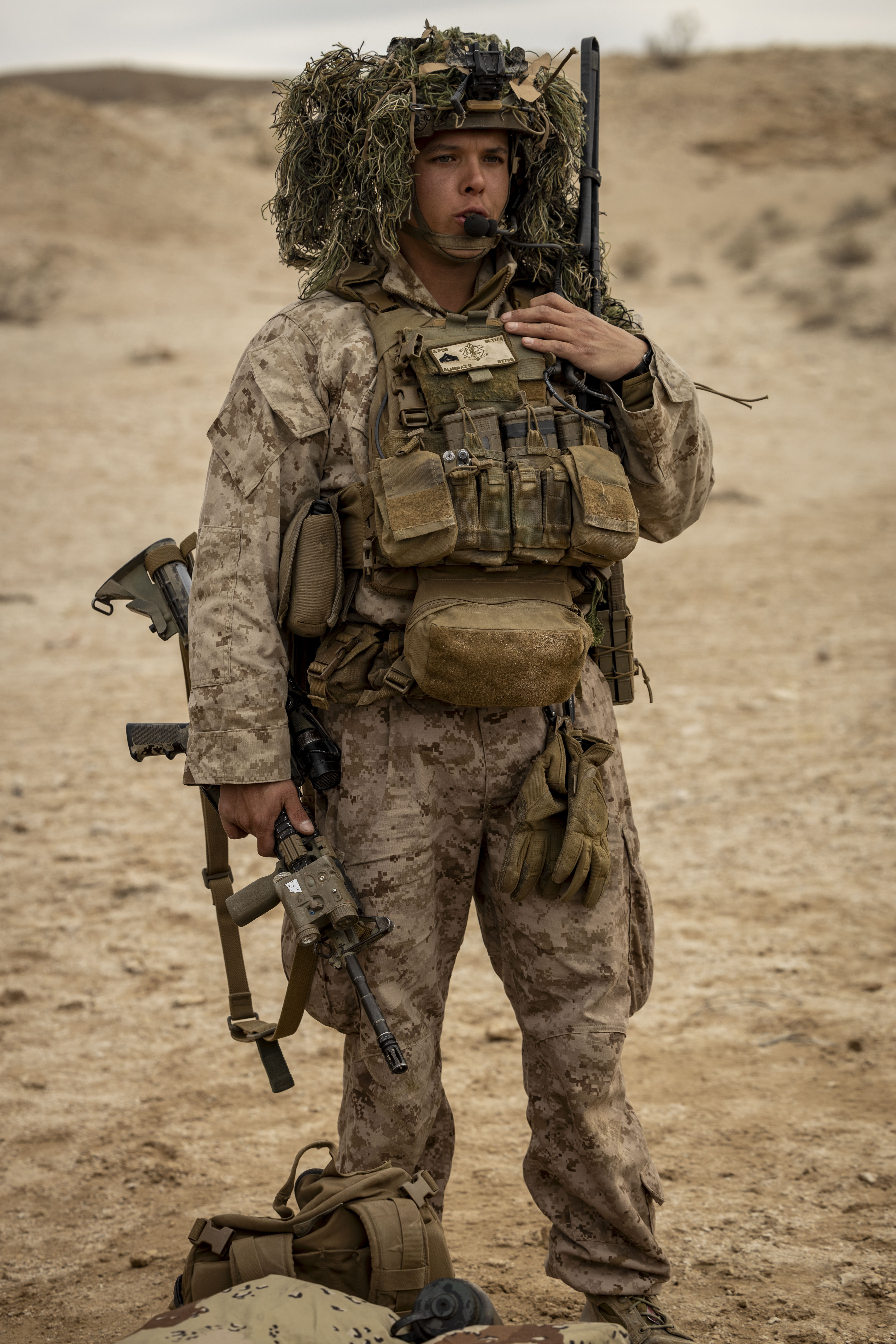
During Steel Knight ‘23, Camp Pendleton, Calif.-based 1st Marine Division and I Marine Expeditionary Force units operated in a single, common operation picture created by integrating the new battlefield network, the Marine Training Enterprise Network, with the Navy’s Expeditionary Strike Group 3 and San Diego-based U.S. 3rd Fleet. “We hadn’t been able to do that before,” Iiams said.
This year “we’re going to learn quite a bit about how some of the live systems will play into our Tripoli network,” he said. That includes working toward a common set of data standards that ensures information that’s transmitted is received and understood.
Steel Knight marked the successful introduction of the MTEN, Lomangino said.
“The network stayed up the whole time,” he said. “The nice thing about it was the MTEN is fully integrated with” the Navy Continuous Training Environment. That allowed service-level simulations – the Marine Corps’ MATGF Tactical Warfare Simulation and the Navy’s Joint Semi-Automated Forces – to “talk to each other, interoperate and work together, which provided a common operating picture at the joint level,” he said.
LVC training “opens the aperture of what you can do,” he added, and allows all Marines who participate “to feel like they are training and not a training aid or just supporting an exercise.”
The Marine Corps is adopting joint training tools and looking at other LVC solutions used by the joint force with an eye on supporting Joint All-Domain Command and Control initiatives. “All the services have a piece of” the LVC training environment, Reynolds said. “We’re going to leverage what’s already out there and tailor it to meet our needs – and that helps the whole joint force. So it doesn’t matter what network you’re on. We can still all train together and have a common operating picture.”
“We’re getting after that JADC2 solution for training,” he added, “so all service members can get reps and sets before we’re actually out there in the fight for real.”
Trident and Triumph
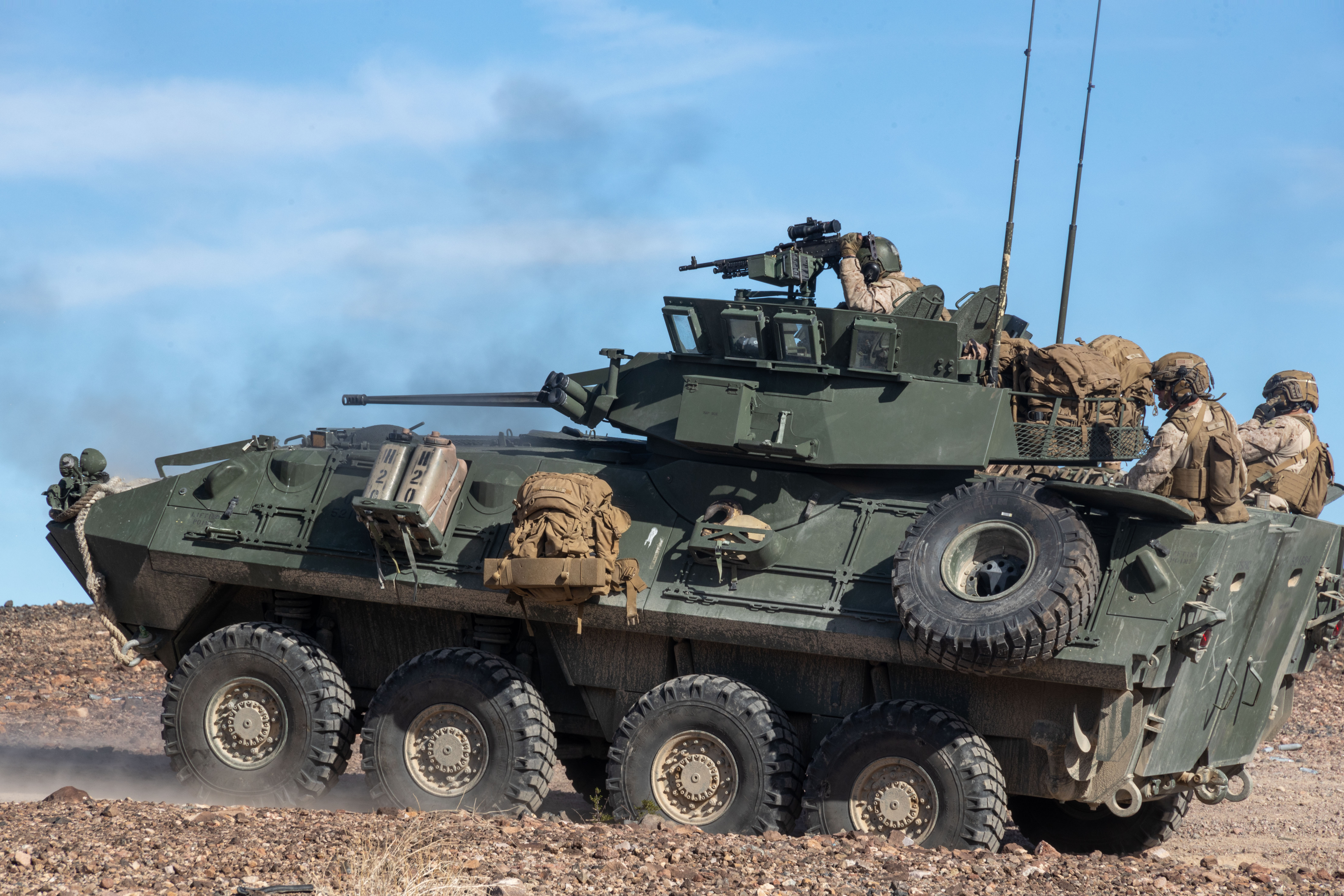
Project Tripoli is one of TECOM’s triad of modernization efforts underway. capabilities and lethality of its Marines as and their weaponry.
Project Triumph is the revamping of education and training courses using the 21st century, student-centered learning models to create effective, thinking warfighters. “How do we make better Marines as we move to the future? How do we teach them how to make themselves smarter than they are when they come in the service,” Iiams said.
“We want to teach them how to be more intellectually stimulated… (and) more intellectually agile, and increase that over the course of their career,” he said. “We want to teach them how to make better decisions, how to be a smarter individual, how to learn faster.” More tailored training “will ensure that what we’re teaching them lasts longer,” he added.
Project Trident is about increasing Marines’ lethality across all warfare domains and expanding naval integration in the contested martime environment.
“No one was actually coagulating all of these assets into one training regimen to be able to teach individuals” and small unit-level teams “how to weave and close kill webs,” said Iiams, a veteran fighter pilot, equating it to developing strike packages with different types of aircraft and missions.
“So how do you take all of these different domains – cyber, electronic warfare, information, air, undersea, sea, land – and provide the greatest effect from each one of those, synchronized in time and space by a decision-maker so we can truly hold an adversary at risk – day in and day out – by knowing where they are… and then have them also know that we can close a kill web,” he said.
“We can provide that location as a weapons quality track to any one of a number of joint or partner nation weapons systems,” he added, “and then close that kill web with a decision maker – probably enabled by (artificial intelligence) to help them to rapidly get through the decision-making process to decide which one is the best sensor and which one is the best shooter so that we can sustain the fight.”





